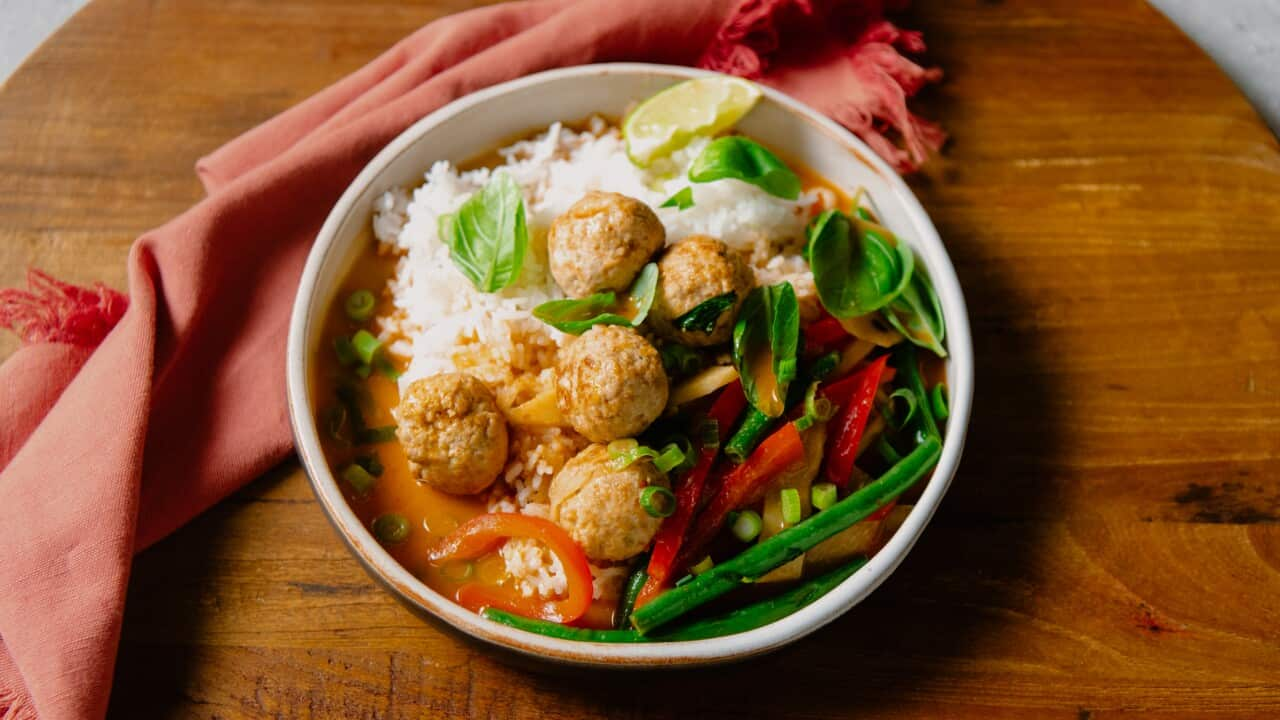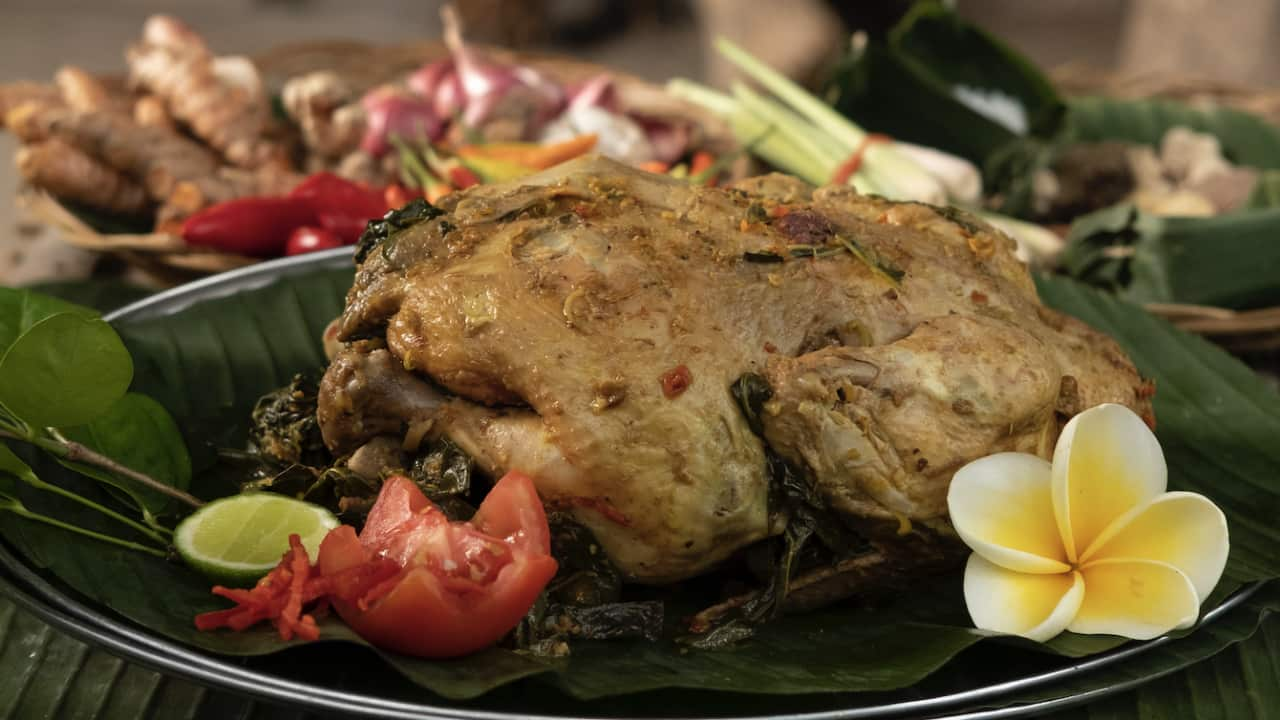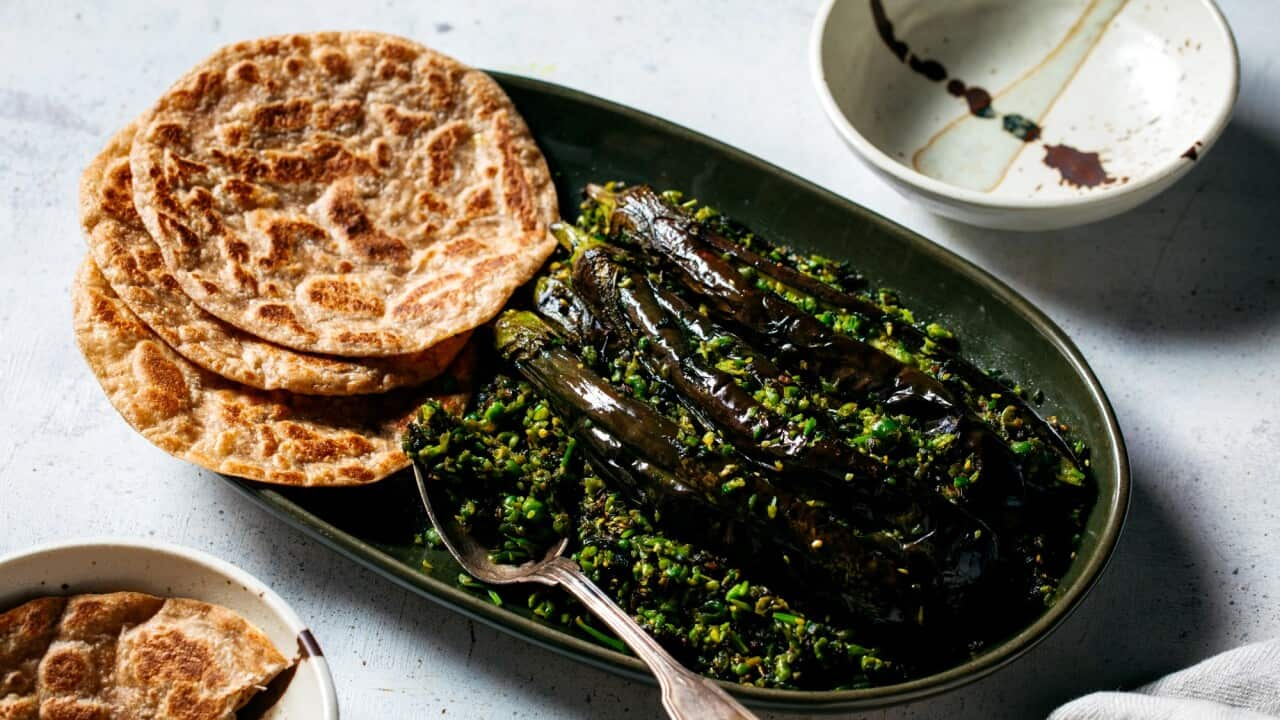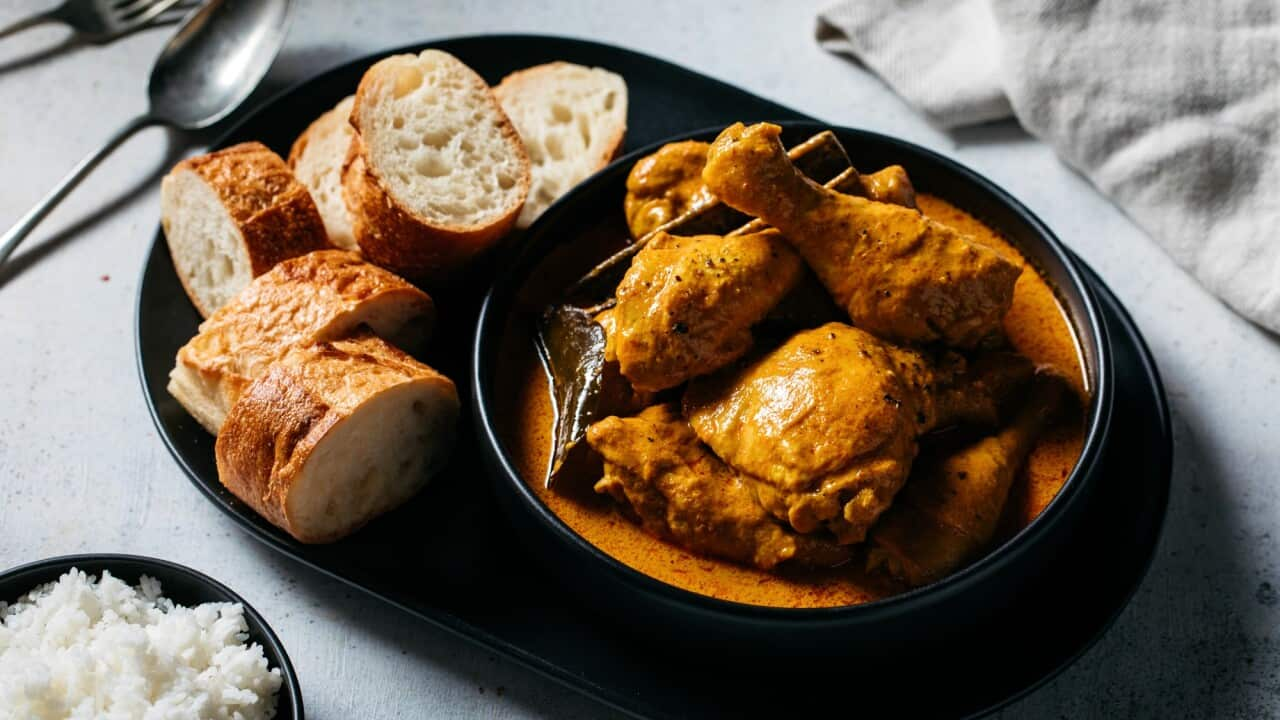-- Watch weeknights on SBS Food (Ch.33) at 7.00pm. Stream all episodes anytime at ---
Curry pastes are like the motors running the engine of countless dishes from across Asia. These concentrated blends of aromatics, spices and fresh ingredients form the foundation of traditional and more experimental recipes alike.
Having these scent-laden stashes on hand means you can whip up a delicious dish quickly and easily. But, they need to be handled with care, when making as well as storing.
Here are a few tips and tricks from experts on how to make the most of them.
Keep a base handy for a shortcut to Indian curries
Helly Raichura of Melbourne fine-dining Indian restaurant, Enter Via Laundry, says if you like cooking a lot of Indian food, then it's a great idea to make a paste of equal parts fresh ginger and garlic, one-fourth green chilli or green birds eye chilli with some oil and store in the fridge in an airtight container.
"You will save so much time this way, I always have a jar ready in my fridge. This would last you 1 week," Raichura says.

Helly Raichura is a fan of making curry pastes ahead. Credit: Helly Raichura
Sri Lankan curries too are made by building layers of spices and aromatics, so this method works well for dishes like , and .
Pre-soak dried chillies
Sydney chef Sujet Saenkham from restaurant advises soaking dried chillies in warm water for 15 minutes.
"Drain and place in the jug of a blender, along with the remaining ingredients," says Saenkham about his .
Pre-soaking chillies before pounding or blending will soften them and make them easier to break down, as well as mellow the bitterness and extract flavour.
Dry-fry spices with care
When making curry pastes, dry-fry spices before blending them into a paste. When making his , Milan Strbac uses a frying pan to "lightly roast the cumin, coriander and sea salt until fragrant". Then, he transfers these to the jug of a blender and processes the curry paste mixture.
If you're building a curry base, start with whole spices, like cinnamon sticks and star anise, then move on to the onion, garlic and ginger. After that, add the ground spices. Put this into action with Kumar Mahadevan's .

Rempah is a spice paste that can be used to make nearly any Malaysian dish. Credit: Adam and Poh's Malaysia in Australia
Use a mortar and pestle
There's no doubt blenders and food processors are quick and convenient, but for optimum flavour, chef Palisa Anderson suggests pounding them in a Thai-style granite mortar and pestle.
Using a mortar and pestle helps to preserve natural moisture, release flavours and create a silkier texture. As a general rule, start with rehydrated chillies, then fibrous aromatics (lemongrass, galangal, ginger), followed by softer aromatics (garlic, shallots). Finish with ground spices and dried shrimp until you have a smooth, even paste.
READ MORE

Thai red curry meatballs
Use a large spoon or spatula to scrape ingredients down the sides of the mortar to make sure everything is incorporated evenly.
"In Thailand, they've got real rhythm in the way they use a big spoon to scrape it around," says Anderson.
Fry your paste until it splits
Cook your curry paste until you see the oil separate from the water, which lets you know there's no more excess water, helping the spices to cook properly.
When making rempah – the that is used in everything from laksa to – Clarissa Feildel, author of food blog The Hungry Ulat, says that rempah is ready when "you can see the oil and the rempah split".
"It shouldn’t be brown, it should keep its colour, but it should shrink until half its size and it's done."
Gusti Ayu Wahyuni Mustika says when making , the classic Indonesian curry paste, "blend all the spices with a little coconut oil and then cook in a heavy wok or pot until the mix becomes aromatic and the oil separates".
This should take about 60 minutes.
Don't hesitate to embrace substitutions
Adam Liaw suggests ginger in place of galangal. "It will not taste exactly the same, but they have a similar purpose."
Meanwhile, you can substitute candlenuts with peanuts or unsalted macadamia nuts.
"These are popular in many Southeast Asian dishes; they add creaminess to recipes from rendangs to laksa," says Liaw.
And instead of cream, use yoghurt. "In North Indian cooking, you can often substitute cream with yoghurt."
Store them right
Cook your curry paste before storing
Thai chef Sujet Saenkham recommends cooking blended pastes in a fry pan with a small amount of vegetable oil before storing in the fridge.
This helps to release all the flavours.
Refrigerator tips
To better preserve your paste in the fridge, top them with a layer of oil in an airtight jar.
Freeze in smaller sizes
Palisa Anderson recommends storing your curry paste in the freezer in serving sizes you plan to use.
One user commented: “I put it in an ice tray and freeze it... Once frozen I put it into a ziplock bag and it’s there for next time.”
Label your labour of love
Label your curry pastes and bases with their name and the date they were made. If you’re gifting a paste, consider including a card with instructions for the lucky recipient on how to use it.
Get creative with curry paste
Consider curry pastes more as flavour pastes that can bring depth and complexity to bolster an array of dishes.
Palisa Anderson uses curry pastes in soups, stir fries, marinades, braises.

Credit: Danielle Abou Karam
Adam Liaw uses red curry paste in his , and as a sauce in his . Chef Breda Fenn uses green curry paste in her Green curry pork pie.
on how to use curry paste:
One user likes putting it in pumpkin soup, while another thinks it works well in stir-fries.
"Love using a little bit to stir fry vegetables for extra flavour. Or sometimes toss with oil and root veggies then roast them. So good!"
People also add it to chicken balls, mince for burgers and sausage rolls.
Other ideas include marinating chicken thighs with curry paste and yoghurt before air frying, and adding it to omelette.
With all these curry paste possibilities to unlock, be sure to (at least!) double your quantity.








